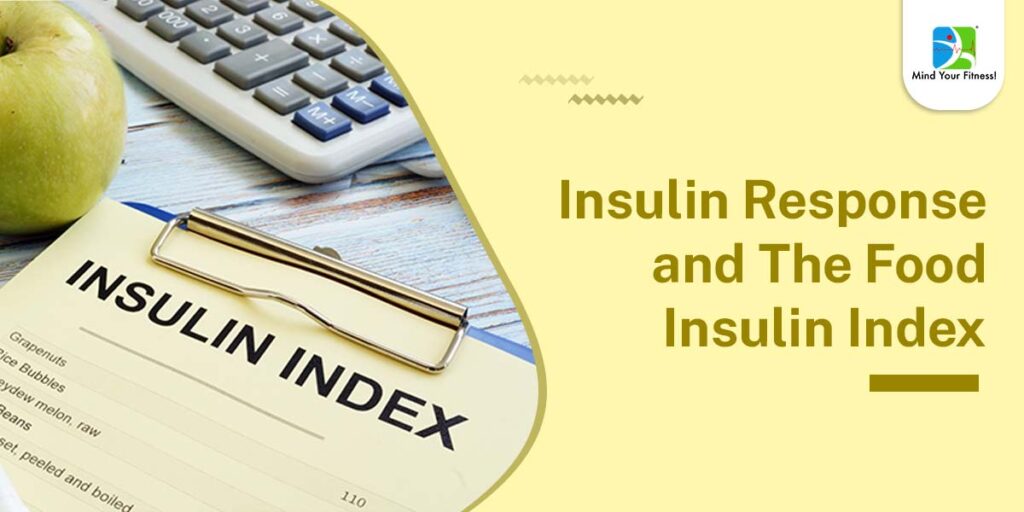
With respect to the development of obesity and type-2 diabetes (T2DM), it is important to consider individual effects of different nutrients on insulin secretion and examine the interplay between glucose metabolism and that of the two other primary nutrients such as proteins and fats.
It is this mixed nutrient sensing that generates the signalling for insulin release. Understanding the molecular mechanisms by which glucose, amino acids and fatty acids regulate insulin secretion form the basis for treating “diabesity”.
Currently the glycemic index (GI) of various foods is commonly used to assess the glucose response and thus insulin response since insulin release is proportional to the glucose load. However, this may not always be the case.
Some foods may have a moderate glycemic index with a higher insulin response.
A food insulin index (FII) was calculated for 38 foods with the use of the observed insulinemic response (area under the curve; AUC) relative to the reference food, white bread (=100).
For example, when servings of pasta and potatoes (equal calories) both containing 50g carbohydrate were compared, the insulin secretion for potatoes was three times greater than that for pasta.
Bakery products (rich in fat and refined carbohydrates) elicited insulin responses that were disproportionately higher than their expected glycemic responses as per the GI method.
Honeydew melon has a GI of 62 and insulin index of 127; banana has a GI of 52 and insulin index of 81.
It is now well accepted that different foods containing equal amount of carbohydrates can produce a wide range of insulin responses.
The rate of starch digestion, the amount of rapidly available glucose and resistant starch and the rate of gastric emptying, release of gut hormones, presence of protein and fat are other important factors influencing the degree of postprandial insulin secretion.
Since fat and protein individually and in combination also influence the insulin response, the GI methodology does not sufficiently provide a guide to the relative insulin response to mixed meals and foods that contain more protein and fat.
Amongst protein rich foods, fish, dairy and beef still had larger insulin responses per gram than did many of the foods consisting predominantly of carbohydrate.
For eg., Yoghurt has a GI of 31 and FII of 115.
One of the limitations of the insulin index is that it only considers the short term insulin response to food (2 hours after eating).
So, how does one interpret it?
The role of individual nutrients in insulin secretion:
Glucose:
The primary stimulus for insulin secretion is an elevation in blood glucose concentration and β-cells are particularly responsive to it.
Fat:
In the fasted state, fatty acids (FA’s) are are oxidised via the β-oxidation.
After consuming a carbohydrate-containing meal, fatty acid oxidation is inhibited. In addition, when fat is supplied with carbohydrates, it can also enhance insulin release.
Thus, FAs in the “absence of glucose” induce insulin secretion to a lesser extent. Higher fat foods tend to cause a smaller insulin response (glycerol portion can convert to glucose).
However, FAs in the presence of glucose amplify the insulin release which blunts the acute glucose response (slower rise in blood sugar). But this combination is lipogenic in the long run.
Long term exposure to fatty acids combined with glucose results in glucolipotoxicity and decreases in insulin release leading to Type 2 diabetes.
Amino acids:
It was recently shown that L-arginine (6-8g/day) exerts many positive influences on β-cell metabolism: i) stimulation of insulin secretion and sensitivity; ii) provision of anti-oxidant and protective responses (glutathione synthesis). Homocysteine can inhibit insulin secretion. Branched chain amino acids are insulinogenic (leucine is ketogenic, valine is both ketogenic and glucogenic and isoleucine is glucogenic). Glutamine (15-30g/day) increases circulating GLP-1, glucagon and insulin. It reduces postprandial sugar.
Proteins stimulate the release of both insulin and glucagon in succession. Glucagon opposes the action of insulin several hours after eating protein.
Besides, it helps in preservation of lean body mass which improves insulin sensitivity in the long term.
Insulin secretion in response to amino acids is interesting in terms of treatment of type-2 diabetes. Most of the insulinogenic amino acids trigger insulin secretion by mechanisms that differ from glucose.
Several possibilities might explain the response: a slow conversion of protein to glucose, less protein being converted to glucose and released than previously thought, glucose from protein being incorporated into hepatic glycogen stores but not increasing the rate of hepatic glucose release, or because the process of gluconeogenesis from protein occurs over a period of hours and glucose can be disposed off if presented for utilization slowly and evenly over a long time period.
Take home:
- Glucose (from carbohydrates) will remain the most potent stimulator of insulin. Even moderate GI carbohydrates may stimulate a higher insulin response. More insulin=more fat storage/less fat burning=high body fat. Excess body fat perpetuates insulin resistance.
- Fats alone do not stimulate insulin secretion to a large extent but in the presence of carbohydrates cause a greater insulin response.
- Protein stimulates insulin secretion but the overall effect is not comparable to carbohydrates. It improves insulin sensitivity in the long term. Adding fat may blunt the acute spike.
- The food insulin index has a place in maintaining nutritional ketosis (less insulin spikes=more ketones), and probably in the day-to-day management of type 1 diabetes. Currently, insulin dose is estimated by carbohydrate counting, but there is potential for it to be more precisely predicted by a greater understanding of the relative “insulin demand” evoked by mixed meals.
~Shweta Bhatia, Registered Dietitian
References:
The insulinogenic effect of whey protein is partially mediated by a direct effect of amino acids and GIP on β-cells
Nutrition & Metabolism, volume 9, Article number: 48 (2012).
Nutritional Regulation of Insulin Secretion: Implications for Diabetes:
Clin Biochem Rev. 2012 May; 33(2): 35–47.
Dietary insulin index and insulin load in relation to biomarkers of glycemic control, plasma lipids, and inflammation markers
The American Journal of Clinical Nutrition, Volume 94, Issue 1, 1 July 2011, Pages 182–190.
Food insulin index: physiologic basis for predicting insulin demand evoked by composite meals
The American Journal of Clinical Nutrition, Volume 90, Issue 4, 1 October 2009, Pages 986–992.
An insulin index of foods: the insulin demand generated by 1000-kJ portions of common foods
The American Journal of Clinical Nutrition, Volume 66, Issue 5, 1 November 1997, Pages 1264–127.
Nutrient Modulation of Insulin Secretion
Vitamins & Hormones, Volume 80, 2009, Chapter 9, Pages 217-244.
Validation of the food insulin index in lean, young, healthy individuals, and type 2 diabetes in the context of mixed meals: an acute randomized crossover trial
The American Journal of Clinical Nutrition, Volume 102, Issue 4, 1 October 2015, Pages 801–806.
Protein: metabolism and effect on blood glucose levels
Diabetes Educ, 1997 Nov-Dec;23(6):643-6, 648, 650-1.





